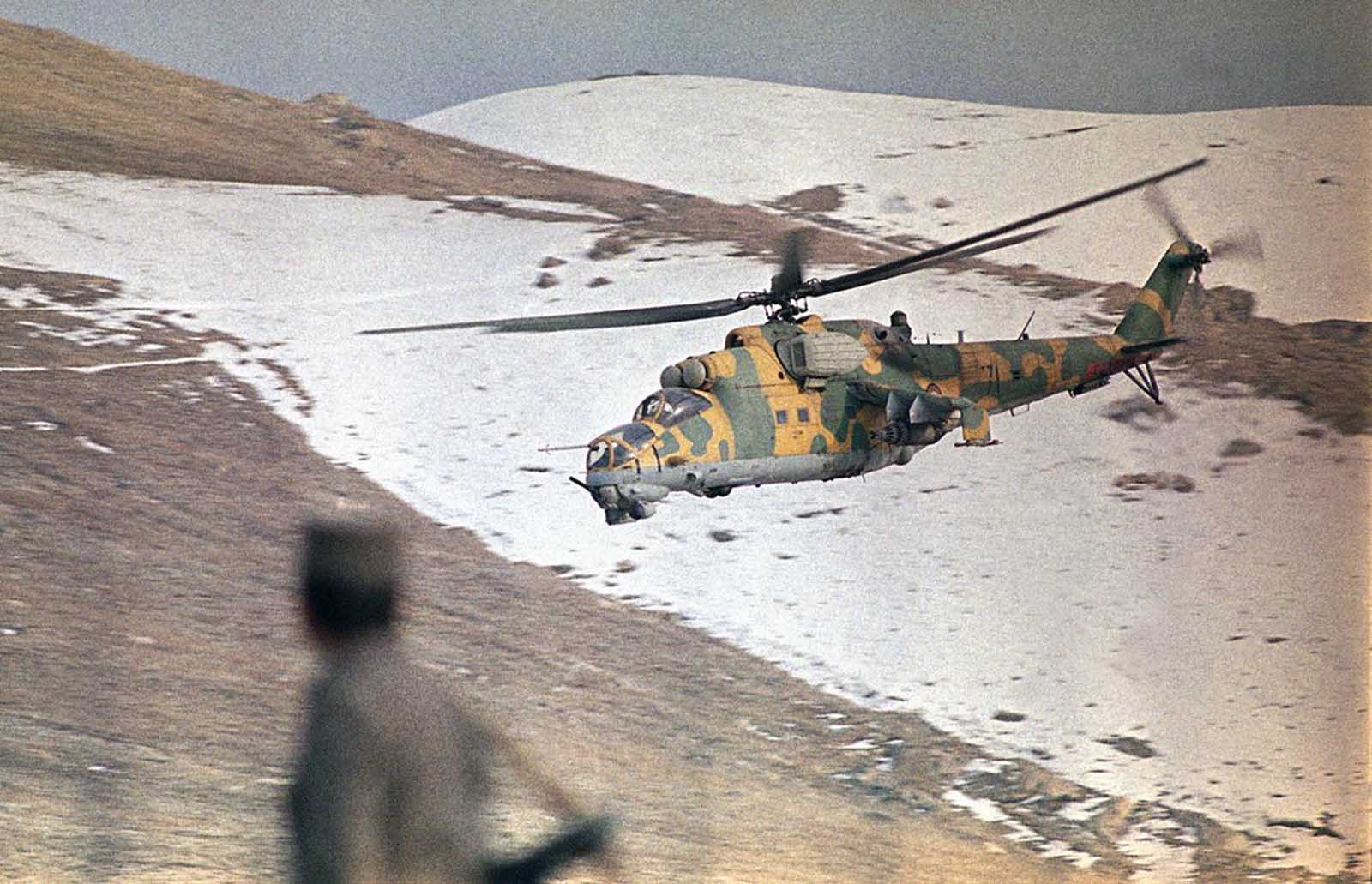The Soviet War in Afghanistan in rare pictures, 1979-1989

The Soviet War in Afghanistan was a nine-year period involving Soviet forces and mujahideen rebels fighting to overthrow the Marxist People's Democratic Party of Afghanistan (PDPA) government in Afghanistan.
The Soviet Union supported the government while the rebels received support from various sources including the United States (in the context of the Cold War) and Pakistan. The conflict was a proxy war between two superpowers, who never actually met in direct confrontation.
The actual reasons why the Soviet Union invaded Afghanistan are far more complex. The Soviet Union found itself almost completely surrounded by enemies. To the west stood Western Europe, full of NATO forces, nuclear weapons and American bases.
To the southeast was China, which had about a million soldiers on the border with the USSR. Up to this point, relations between China and the USSR were dire, often fatal skirmishes across the Ussuri River, and China was openly working with the United States to contain the Soviet Union by 1979.

In the South, they also had American allies: Turkey, Iran, Iraq and Pakistan - capable of deploying US troops and missiles. The USSR did not understand the extent to which the Iranian Revolution and several incidents with Pakistan had damaged relations with the United States, and yet saw them as lockstep with the US.
The only country on the southern border of the Soviet Union that had no real relationship with the United States or China was Afghanistan. Afghanistan had some ties with the US and some with the USSR, but in both cases, they were quite limited.
Afghan relations with the USSR included the training of the Afghan elite (military, political, scientific, etc.) in Soviet universities, where they were embroiled in communism.
This meant that there were many people at the elite level who were coming to adopt a secular/communist ideology, while the general public were strong supporters of Islam and tribal values. For example, the elite were pro-women's rights, while the general public was in favor of traditional Afghan gender roles.

In Afghanistan in 1973, the king, Zahir Shah, was overthrown by his cousin Dawood Khan. Dawood was by no means a communist, but he was associated with communists, and was also associated with Pashtun nationalist movements.
This frightened Islamists in Afghanistan (who were becoming increasingly political thanks to the spread of texts from the Muslim Brotherhood and similar groups) and Pakistan, which was in a state of fear that ethnic conflict might dissolve the state of Pakistan. (This fear is not without purpose, Pakistan lost what is now Bangladesh in a civil war in 1971 that was largely fought on ethnic lines).
India assisted Bangladeshis in the 1971 war, and India had ties to the USSR, so in Pakistan, which held itself together with the notion that it was India's Islamic counterpart, the notion that communism/USSR = secularism = ethnic fracturing = no more Pakistan. So Pakistan starts training and arming radical Islamists to go back to Afghanistan to fight against Dawood.
By 1975 Dawood was dealing with this rebellion, but Dawood is a very skilled politician and he manages to keep the rebels at bay for the most part. Islamists were still troubled by Dawood being in power, but they really had two options - either lay down arms against him or flee to Pakistan. Many of them fled to Pakistan, which continued to arm and train them.

However, the communist currents were spiraling out of control, and Dawood feared them as much as the Islamists. Communism had infiltrated the military and political class, so Daud was indeed in a difficult position.
His campaigns against communism only served to push him further away from it, and in 1978 Dawood was executed by a radical communist named Taraki.
If the Islamists were angry with Dawood, they were afraid of Taraki. Taraki was a staunch communist and a serious reformer, and he was trying to implement reforms and build a Stalin-like police state and cult of personality that even the Soviets thought was too swift. They told him to slow down, but he just kept going and pretty much went into civil war.

Taraki's crackdown on Islam, promoting women's rights, and just his overall reforms were too much for the Afghan population, and in less than a year, by March of 1979, the country was pretty much in revolt against them.
It was getting aid from the USSR, and the rebels were getting some aid from Pakistan, possibly Iran, and the US, and possibly China.
Most of that aid probably didn't amount to much, but the Soviets saw it the same way any country would see it if they learned that a violent uprising on their borders was being fueled by a foreign country. He blew it out of proportion and doubled down on Taraki.
In August of 1979, it got even worse for the Soviet Union. Taraki's foreign minister, whom the Soviets disliked and was somewhat convinced was a CIA agent (he was not), smothered Taraki with a pillow and took power for himself.

No comments: